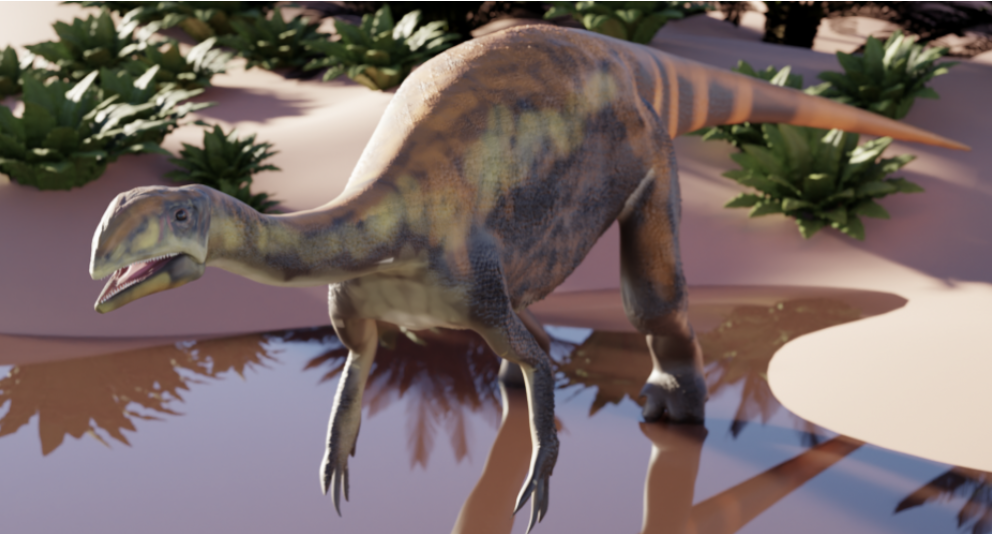
THE ICE SHEET'S HIDDEN STORIES

- When Greenland was green
- Dinosaurs lived in Greenland
- The landscape under the ice
You solve the tasks by using
- Text
- Audio
- Drawing tools
- Pictures
This part is based on pp. 34-41 – there you will find information about the subject.
Learn about the melting of the ice that makes Greenland rise. And about a population of polar bears benefitting from climate changes here.
Today most of Greenland is covered by ice but 450,000 years ago the climate was much warmer.
In a layer of sediment remains of butterflies, moths, flies and beetles have been found by DNA analysis.

On the map (p. 37 in the book) different kinds of vegetation are indicated. Where in the world are these kinds of vegetation found today?
Search the Internet to find out how Greenland got its name.
Why is a warmer climate more favourable for some species, making them able to adapt better? Use this link.
This is a reconstruction of a dinosaur species of which bones have been found in Greenland.
It is a formerly unknown species and it has been called “issi saaneq” that means cold bones.

What did the supercontinent Pangea look like? Search the Internet.
Click this link to find out to whom issi saaneq is a predecessor.
What type of climate existed in Greenland 450 million years ago?
Under the ice in Greenland the landscape has been pressed down to form a kind of bowl.

This model (page 40) shows Greenland’s landscape under the ice sheet. How do you read the model?
What is being drained in the model on page 41?
Why would the bedrock rise if all of the ice sheet melted?
Today most of Greenland is covered by ice but 450,000 years ago the climate was much warmer.
In a layer of sediment remains of butterflies, moths, flies and beetles have been found by DNA analysis.

On the map (p. 37 in the book) different kinds of vegetation are indicated. Where in the world are these kinds of vegetation found today?
Search the Internet to find out how Greenland got its name.
Why is a warmer climate more favourable for some species, making them able to adapt better? Use this link.
This is a reconstruction of a dinosaur species of which bones have been found in Greenland.
It is a formerly unknown species and it has been called “issi saaneq” that means cold bones.

What did the supercontinent Pangea look like? Search the Internet.
Click this link to find out to whom issi saaneq is a predecessor.
What type of climate existed in Greenland 450 million years ago?
Under the ice in Greenland the landscape has been pressed down to form a kind of bowl.

This model (page 40) shows Greenland’s landscape under the ice sheet. How do you read the model?
What is being drained in the model on page 41?
Why would the bedrock rise if all of the ice sheet melted?



